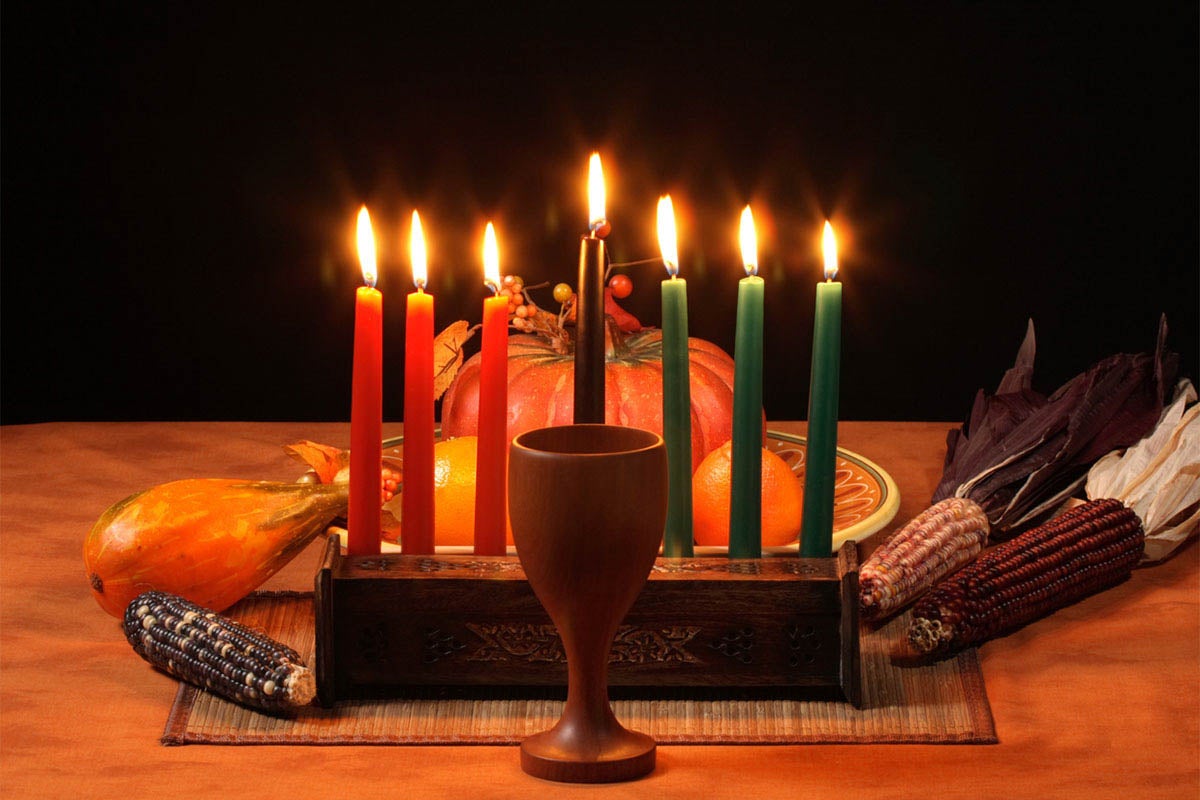Each year Kwanzaa-a seven-day celebration traditional to the African American community-takes place Dec. 26-Jan. 1. Derived from the Swahili phase mutanda ya kwanzaa, which means “first fruits,” Kwanzaa was first celebrated in 1966 and reinforces traditions across the continent of Africa.
“Kwanzaa was created by Maulana Karenga, an Africana studies adjunct professor, and other indiviuals in the Los Angeles community after the Watts Riots, which took place Aug. 11-16, 1965,” says Don Harrell, a UCF adjunct professor of Africana studies. “It was a Black nationalist effort at that particular point, but the nationalist ideas, which are more separatist, gave way to cultural nationalism, which is more focused on relating back to Africa for inspiration and a sense of purpose.”
Harrell was a graduate student at UCLA who served as program director at a South Central, Los Angeles, community center where early Kwanzaa celebrations were organized.
“It’s amazing to have seen Kwanzaa grow from being celebrated by a limited number of people to it becoming almost popular culture at this point,” he says.
As a founder of Orisirisi African Folklore, a performing arts and arts education company, Harrell has participated in many Kwanzaa celebrations since those early days, and here he shares some insight on the cultural celebration.
What is the significance of Kwanzaa?
Kwanzaa is not a religious holiday. So, it in no way competes with or serves as a substitute for the faith-based observances that have lasted for centuries. It is a cultural celebration of Blackness that is about knowing self, understanding self, reinforcing self and understanding the beauty that lies within. It is an African American African-centered celebration of community that fills a void that previously existed for African Americans. It is a celebration based on African principles and ideals and the first fruits or harvest celebrations traditionally observed in many parts of Africa. So, as such, it’s a reconnection with the African past to help forge an African American future.
“[Kwanzaa] is a cultural celebration of Blackness that is about knowing self, understanding self, reinforcing self and understanding the beauty that lies within.” — Don Harrell, adjunct professor
Even after enslavement was technically abolished, the idea of keeping Blacks in bondage, in one form or another, and mischaracterizing and keeping them unaware of their African past continued to exist. There had already been hundreds of years of this type of assaults on the lives of Black Americans. In the last half of the 20th century, a departure from the acceptance of the resulting “second-class” citizenship began to proliferate that included the creation and practice of Kwanzaa. The effect-a shift in the thinking of African Americans a people who had as much reason to be as proud of themselves as anyone else began to surface, and Kwanzaa played a pivotal role in this metamorphosis.
Each day of Kwanzaa is based on an African principle. What are the seven principles of Kwanzaa?
The Seven Principles of Kwanzaa are called the Nguzo Saba. Each day one of these principles is the topic of discussion. Celebrants will he heard to say “Habi gani?,” which means “What’s the word?” The reply is the principle that represents that day. The discussions that follow facilitate the reconnection to ideals steeped in African cultural traditions. At Kwanzaa gatherings African drumming, dance, fashion, and cusine are front and center.
On the first day, the focus is on Umoja, or unity. It relates to the need to maintain unity in family, community and nation.
The second day is in celebration of Kujichagulia or self-determination, which means to define, name and speak for ourselves.
The word for day number three of Kwanzaa is Ujimaa, or collective work and responsibility, which is to build and maintain our community together and make our brother and sister’s problem our problem and to solve them together.
Day number four is Ujamaa, or cooperative economics. The whole idea is to build and maintain our own stories, shops, and other businesses and to work together to profit from them collectively.
The fifth day is Nia, the Swahili word for purpose, which means to make collective vocation to build and develop community and to restore traditional greatness.
The sixth day is Kuumba or creativity, which means to always do as much as you can in the way that you can to leave the community more beneficial and more beautiful than it was when you found it.
The seventh and final day is Imani or faith, which is the belief in and commitment to all that is of value to us as a family, community, people, and culture.
There are also seven symbols of Kwanzaa. What are they and their significances?
The first of the seven symbols are the Mazao — the crops (fruits, nuts and vegetables). It represents the historical foundation for Kwanzaa, the gathering of the people that is patterned after African harvest festivals in which joy, sharing, unity, and thanksgiving are the fruits of collective planning and work
Then there is the Mkeka or straw mat which symbolizes the foundation upon all else rests.
The third symbol is the Mundhindi, which is ears of corn. It represents fertility and symbolizes it through the reproduction of children, which are the future hopes of life. One ear of corn is called Vibunzi.
The Mishumaa Saba, the fourth symbol, is the seven candles. During the seven days of Kwanzaa when we discuss the seven principles a candle is lit. They are ceremonial objects with two primary purposes-to symbolically recreate the sun’s power and to provide light. There are three red candles, three green ones, and one black one, which is lit on the first day of Kwanzaa.
The candles are placed on another symbol — the fifth one, which is called the kinara of candle holder. It is the center of the Kwanzaa setting and represents the original stock from which we came-the ancestors.
Then there is symbol number six-the unity cup or the Kikombe Cha Umoja. On the sixth day a libation ritual, which is an African tradition, is performed during the karamu or feast.
The last symbol is the Zawadi or gifts, which are presented on the seventh day of Kwanzaa and are meant to encourage growth, self-determination, achievement, and success.
What is the significance of the red, black, and green Mishumaa Saba, or Seven Candles of Kwanzaa?
Red, black, and green are the Black liberation colors. The black candle, know as the unity candle is lit on the first day. The red candle represents the blood of African peoples and the struggles of the past, while the green candle represents Earth and foretelling of the abundance of the future to come. The Kwanzaa candles are lit left to right each night, with the red candle lit on the second night, third and forth nights. The green candles are lit on the fifth, sixth and seventh nights.
Are people from other ethnic backgrounds encouraged to participate in Kwanzaa?
Yes! You don’t have to be an African American to be a part of a Kwanzaa celebration or to enjoy, benefit, or grow because of participating. In fact, as time moves forth diversity has more and more become what characterizes them — as Blackness is more than a word.





